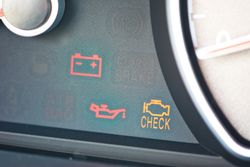
A car’s exhaust is likely taken for granted until a problem arises. Having a basic knowledge of your car’s exhaust system and knowing when to take your vehicle for auto maintenance will keep this component in top shape. Use this guide to learn more.
5 Components of Your Vehicle’s Exhaust System
1. Exhaust Manifold
As your engine burns fuel, gases and fumes are produced. These need to be vented for safety and efficiency. The exhaust manifold is the beginning of a series of parts that help achieve this.
The exhaust is mounted against the engine to capture fumes as they’re produced and release them outside of your vehicle. Because the part is positioned in one of the hottest parts of a car, it’s at risk of developing cracks due to extreme heat and pressure.
2. Oxygen Sensor
The oxygen sensor is situated near or in the manifold and detects oxygen levels in your fuel mixture. This information is used to calculate how much fuel you have remaining in your tank. The sensor can fail if there’s a buildup of contaminants, such as phosphorus or silica, that could be vented in the process of burning fuel.
3. Catalytic Converter
 This important component converts carbon monoxide and hydrocarbon gases into carbon dioxide and water vapor, making them safer for ventilation into the air. If fuel isn’t burning completely in the engine, sending more contaminants into the exhaust than it can handle, the catalytic converter can become overloaded and fail.
This important component converts carbon monoxide and hydrocarbon gases into carbon dioxide and water vapor, making them safer for ventilation into the air. If fuel isn’t burning completely in the engine, sending more contaminants into the exhaust than it can handle, the catalytic converter can become overloaded and fail.
This is a common reason for an illuminated “Check Engine” light. As soon as you notice this dashboard light, take your car in for auto maintenance. Waiting too long will require a costly component replacement.
4. Exhaust Pipes
After the exhaust is captured, these pipes transport it from the manifold, along the underside of the car, to the rear. Think of this section as the engine’s chimney.
Corrosion is the most significant problem exhaust pipes experience. Exposure to moisture, dirt, and road salt during the winter can aggravate rust, causing the pipes to fail. If a pipe has broken, you may detect exhaust leaks or burning smells emanating from the engine compartment.
5. Muffler
The muffler reduces extremely loud combustion sounds as they exit your exhaust. These sound waves travel through the exhaust pipes before reaching the muffler. The muffler contains tubes called baffles that break up the waves, cutting down on noise. Water buildup in the muffler causes the baffles to rust and lose their effectiveness, creating loud rattling sounds and foul smells.
For effective and reliable auto maintenance, turn to Dee's Auto Care Specialists. They’re located in La Crosse, WI, Onalaska, WI, and Winona, MN. Their ASE-certified crew has been in business since 1936 and is the Coulee Region’s most trusted repair service. This team of auto technicians prides themselves on being a complete care auto shop, handling many issues, including brakes, exhausts, and transmissions. Call (608) 782-2530 to request an estimate, or view their services online.
About the Business
(17 reviews)
Have a question? Ask the experts!
Send your question

